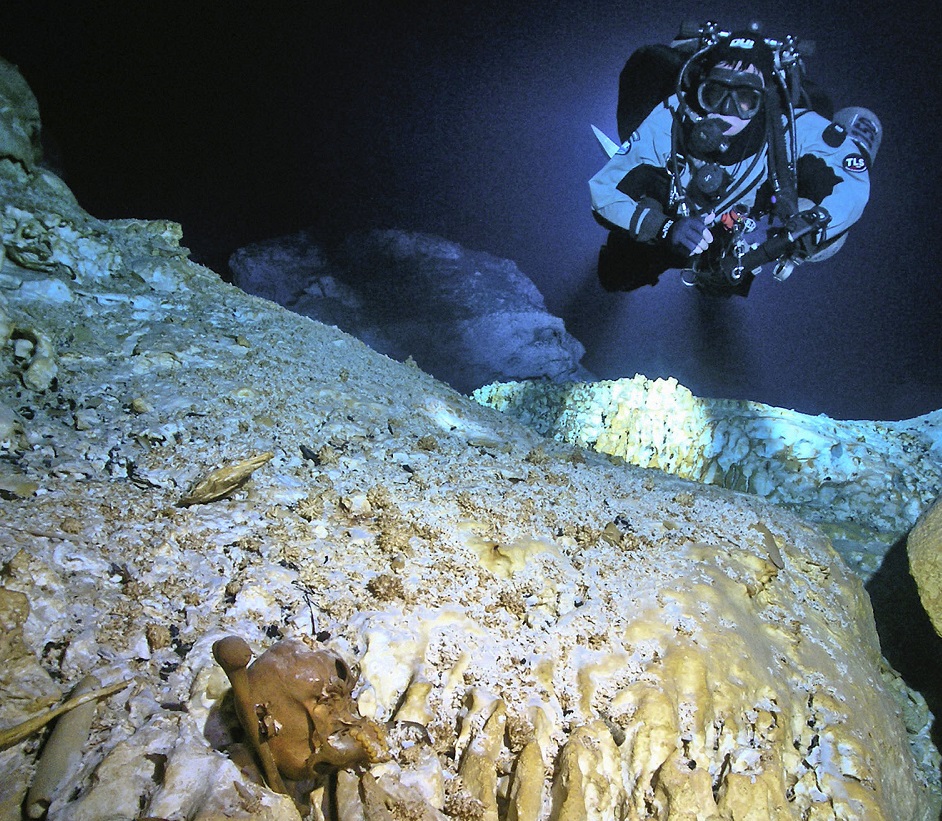
Named "Naia", the teenager fell to her death in a large pit called Hoyo Nego, meaning "black hole" in Spanish.
Patricia Beddows, a cave-diving researcher from Northwestern University, said: "The preservation of all the bones in this deep water-filled cave is amazing - the bones are beautifully laid out."
"The girl's skeleton is exceptionally complete because of the environment in which she died -- she ended up in the right water and in a quiet place without any soil. Her pristine preservation enabled our team to extract enough DNA to determine her shared genetic code with modern Native Americans," she added.
The skeleton, which is now covered in water, is estimated to be between 12,000 and 13,000 years old, suggesting Naia lived in the late Pleistocene or last ice age.
Naia measured 4ft 10in tall and was delicately built. Her estimated age of death was 15 or 16 years old, based on the development of her teeth.
The near-complete human skeleton, which has an intact cranium and preserved DNA, was found lying 130ft below sea level near a variety of extinct animals, including an elephant-like creature and relative of the mastodon called a gomphothere. These remains helped scientists establish the age of the skeleton.
In order to assess the age of the skeleton, the team analysed tooth enamel and seeds dropped by bats using radiocarbon dating and calcite deposits found on the bones using the uranium-thorium method.
They used similar methodology to date the remains of a variety of gomphothere found near the skeleton, which were found to be around 40,000 years old. The more than 26 large mammals found at the site included saber-toothed cats and giant ground sloths, which were largely extinct in North America 13,000 years ago.
Naia's age was further supported by evidence of rising sea levels, which were as much as 360ft (120m) lower during the last ice age than they are today.
The research was led by the Mexican government's National Institute of Anthropology and History (INAH) and Applied Paleoscience.
"Hoyo Negro is a very complex site," Beddows said. "By understanding the formation of the shallow caves and the shaft into which the girl fell, we know that the girl and the animals visited a site that looks almost like it does today, except that the water level was down in the bottom of the shaft."
"These discoveries are extremely significant," said Pilar Luna, INAH's director of underwater archaeology. "Not only do they shed light on the origins of modern Americans, they clearly demonstrate the paleontological potential of the Yucatán Peninsula and the importance of conserving Mexico's unique heritage."
The discovery was published in the journal Science.



Reader Comments
to our Newsletter